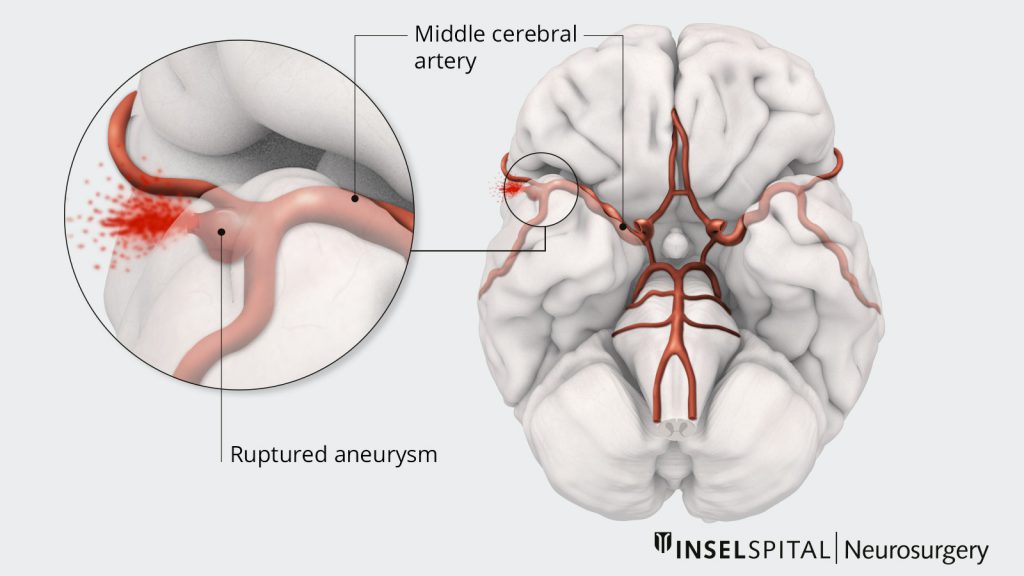Subarachnoid Hemorrhage
Subarachnoid hemorrhage (SAH) refers to hemorrhage within the subarachnoid space, that is the space between the brain and also the tissues that cowl the brain. Most often, it happens once a weak space in an exceeding vessel on the surface of the brain bursts & leaks. The blood then builds up around the brain and within the skull increasing pressure on the brain. This may cause neuron injury, life-long complications, and disabilities.

Most subarachnoid hemorrhages caused by brain aneurysms don’t cause symptoms till they rupture. A burst brain aneurysm disease is an emergency. Symptoms of a ruptured brain aneurysm disease include:
- Sudden worst headache of life
- Associated neck or back pain
- Nausea and puking
- Decreased responsiveness
- Sudden weakness
- Dizziness
- Seizure
Treatment for SAH varies, counting on the underlying reason for the hemorrhage and also the extent of harm to the brain. Treatment could embody deliverance measures, symptom relief, repair of the hemorrhage vessel, and complication prevention.
A subarachnoid hemorrhage is most frequently caused by a burst blood vessel in the brain. A brain aneurysm could be a bulge during a vas caused by weakness within the blood vessel wall, typically at a degree wherever the vessel branches off. As blood passes through the weakened vessel, the pressure causes a small space to bulge outward sort of a balloon.
Occasionally, this bulge will burst (rupture), inflicting trauma around the brain. More than eight out of each ten subarachnoid hemorrhages happen during this means. A brain aneurism does not typically cause any symptoms unless it ruptures.
